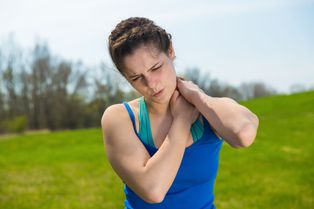
As the name implies, the Thrower's Shoulder has been found to be common in sports which involves throwing. It is also common in some other sports such as swimming and other activities where the shoulder is exposed to heavy loads over time. Therefore, Thrower's Shoulder is not considered an acute injury.
An increased external rotation and decreased internal rotation of the shoulder makes individuals be susceptible for this type of injury. It is often seen in athletes practicing sports involving a large range of movement in the shoulder joints, for example, sports such as swimming and other sports that involve throwing.
During the time when athletes develop thrower's shoulder, the load on his shoulder surpasses the load capacity. This causes the anterior part of the shoulder joint capsule to be pulled gradually and stretched. This can reduce the stability of the shoulder joint and cause injury to the rotator cuff.
The rotary cuff can initially be compensated by an increase in muscle activity. However, further action can lead to fatigue of the rotator cuff, which will make it difficult to maintain normal shoulder mechanics. This can result in an increased risk of sustaining other overuse injuries in the shoulder, for example, injuries to the labrum and rotator cuff.
What are the Causes of the Thrower’s Shoulder?
Whatever that result in further narrowing has a tendency to affect the tendon and lead to an inflammatory reaction, resulting in thrower’s shoulder. This can occur as a result of bony structures, such as subacromial spurs (bony projections from the acromion), osteoarthritis spurs on the acromioclavicular joint, and variations in the form of the acromion.
Another contributing factor to the development of thrower’s shoulder is thickening or calcification of the coracoacromial ligament. The loss of function of the rotator cuff muscles, because of an injury or loss of strength can hinder the movement of the humerus making it move superiorly, which leads to thrower’s shoulder. Inflammation and subsequent thickening of the subacromial bursa can also cause thrower’s shoulder.
Exercises that involve training of the weight where the arms are raised above the height of the shoulder, but in an internally rotated position such as the upright row have been shown to result in thrower’s shoulder.
Symptoms of Thrower's Shoulder
Pain, weakness, and loss of movement on the affected shoulder are the prevalent symptoms of Thrower's Shoulder. Overhead movement of the shoulder aggravates the pain and this can occur at night mostly when you lie on the affected shoulder. In the beginning, the pain can be acute if it occurs as a result of an injury or it can be harmful as it progresses if it occurs as a result of a gradual process for example osteoarthritis spur. Pain is described as dull, not sharp, and lasts for a long time, making it difficult to sleep. Other symptoms may include grinding or popping feelings when moving your shoulders.
The range of movement in the shoulder can be limited due to pain. A painful arc of movement may be present when lifting your arm from 60 ° to 120 °. Passive movement of the shoulder will appear painful when a downward force is applied at the acromion but the pain will decrease after the removal of the downward force.
Thrower's Shoulder Treatment
Treatment for Thrower's Shoulder requires restoring the circulation and blood flow to the affected structures in your shoulder. Pain is caused when swelling, inflammation and decreased circulation generate a blockage, which causes blood flow to be interrupted or slowed. Treatment for this issue requires breaking up the accumulated fluids in your shoulder to allow for improved healing and quicker recovery.
Products recommended for symptoms of swelling, redness, pain, and inflammation, and if coolness makes your pain feel better:
Ice Substitute Poultice
Bruise Relief Liniment
Muscle Therapy Massage Oil
Products recommended when swelling and inflammation are gone, but you still feel pain, stiffness, weakness, and/or sensitivity in cold and damp weather, and if heat makes your pain feel better:
Pain Relief Liniment
Tendon and Ligament Poultice
Muscle Therapy Massage Oil





